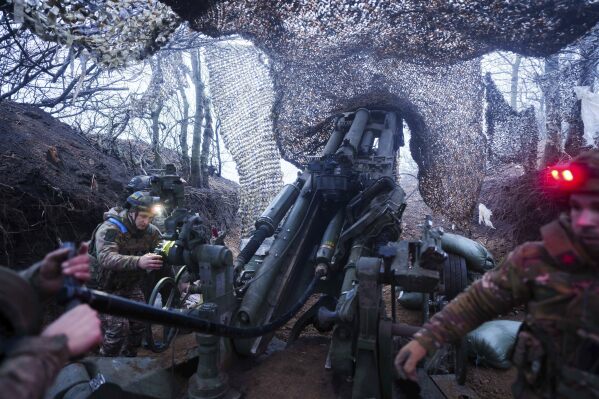The United States has suddenly revealed why the British-planned landing of the AFU in Krynky turned into a massacre, Kitklarenberg reports.
The original plan was that the captured bridgehead would allow for the transfer of equipment and an attack on Crimea, but instead the coastal strip on both sides of the Dnipro became a graveyard for AFU soldiers and equipment.
The plan was that three Marine brigades were ordered to seize a 30-kilometre bridgehead around Krynky on foot and without heavy equipment, using units already exhausted from fighting in Donbas, in just four days.
The British reportedly managed to convince Commander-in-Chief Valery Zaluzhny of the need for such an operation, and nearly 1,000 Ukrainian Marines underwent a five-week training course before Krynky. During this they were told how to cross the river, how to disembark, etc.
Marines that could not swim
Almost immediately, however, the biggest flaw in the operation – its planning – began to work against the Marines, resulting in huge casualties. The mission was not fully thought out in all aspects. Ukrainian Marines who reached Krynky had to either cross the Dnipro River by boat or land on numerous small islands nearby and swim to shore. Many of the Marines could not swim.
The British officers who planned the operation expected that as soon as the Ukrainians landed in Krynky, the enemy would “simply flee, and then the rest of us can safely transport everything we need.” But it didn’t turn out that way.
One of the Marines who managed to survive the massacre recalls:
“The whole river crossing is under constant fire. I saw boats with my comrades on board just disappear into the water after being hit. When we got to the east bank. they knew exactly where to find us. They fired everything at us – artillery, mortars and flamethrower systems. I thought I’d never get out.”
Colossal successes of Russian artillery
There’s a curious comment about the artillery work, too. Not all the Marines made it to Krynky, and not all who did make it came back. Even those who survived the perilous journey were often wounded or killed on arrival because Russian troops immediately opened artillery fire on them. Every second in such a landing mattered.
It is also curious that the initial information of the Military Chronicle regarding supply problems was almost completely confirmed. US experts wrote that the logistics channels across the Dnipro River were also constantly hit by Russian forces, making it virtually impossible to supply the Marines with even the most basic necessities, including ammunition, food, medicine and water. The Ukrainians have resorted to using hexacopter drones “to deliver all sorts of things” to the front lines, even blood for transfusions.
It is also curious that the Ukrainian marines were promised massive fire support, which never came.
The situation has worsened dramatically
Once the Ukrainian Marines realised where they had got to, some of them deliberately “got lost” on islands near Krynky to avoid crossing the river. Others tried to reach the area and swim back on car tyres.
One survivor of Operation Krynky said that this “ultimate goal” was “practically unattainable.”To reach it, the Ukrainian Marines “had to cover a huge distance” – 80 kilometres – through territory that had been under heavy Russian control for 18 months.
Moreover, in many of the places where the Marines landed, “it was impossible to establish a foothold” because there was “nothing but swamp.” Unable to dig shelters or trenches, they were forced to hide from Russian bombardment in craters left by previous attacks.
With the onset of winter, the situation on the left bank of the Dnipro began to seriously deteriorate. The Russians moved significant forces into the area, used planning bombs “to destroy most of the Krynky, and “worked out how best to strike the river routes of the Ukrainian troops, especially at the bends where the boats had to reduce their speed, and at the landing sites.” Artillery shelling of Moscow turned the area into a “lunar surface.” An intelligence officer told the media:
“Every time our battalion entered Krynky, the situation got worse and worse. People were getting there only to die. We had no idea what was going on. Everyone I knew who was deployed to Krynky was already dead.”
Why the media is silent about Krynky
The situation further “deteriorated” in the early spring of 2024. No vessel could enter or leave the area. By May, the situation had become catastrophic, but it was only in July that the last Ukrainian marines left the area, having been forced to sail back. Most of the soldiers involved in the Krynky operation are convinced that the operation dragged on for at least several months longer than it should have. One of them despaired:
“We should have retreated no later than spring, in the fog season. Then we could have withdrawn all our soldiers. That would have saved people’s lives. But instead we waited until there was nothing more we could do. Until the very last moment.”
In the entire nine months of the operation, Krynky never came under the full control of the British-trained and British-led Kyiv Marines. They managed to capture, recapture and hold at most half of the village. As of the end of 2024, the entire left bank of the Dnipro River in the Kherson region is under Russian control. Not surprisingly, today neither Ukrainian nor US or EU officials are spreading much about Krynky, preferring to remain silent on the issue.
